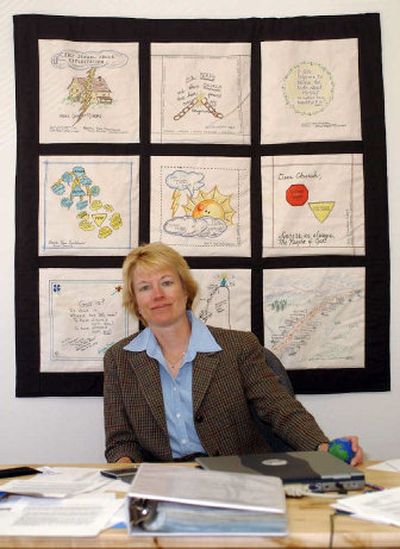Treating deviant priests

DITTMER, Mo. – The Chicago priest, tall and soft-spoken, came to the treatment center for troubled Roman Catholic priests a broken man, depressed and, in his words, keeping “my secret of pedophilia.”
Now, after 15 months of individual and group therapy, a 12-step addiction program, fraternal support and spiritual direction, the priest said he’s “become honest with myself” and been given the tools to face his problems.
“I knew in my heart I needed help,” the priest (who asked that his name not be used) told The Associated Press during a rare look inside the Vianney Renewal Center, 30 miles southwest of St. Louis.
The Chicago man is one of 19 U.S. priests and religious brothers being treated at the one-of-a-kind center for sexually deviant behavior, including offenses against minors.
Most faced credible accusations. Four are registered sex offenders.
Located on four rural acres, the center is run by the Servants of the Paraclete, the only Catholic religious order in the U.S. devoted to ministering to broken priests and brothers.
Other help programs exist, such as the nonprofit St. Luke Institute in Silver Spring, Md., where male and female religious leaders receive six months of treatment for ills ranging from alcoholism and depression to gambling and sexual difficulties.
But Vianney is unique in that most of the men “live and die with us,” said the Rev. Liam Hoare, the center’s community director.
While the Vianney center is “not a prison” or an “extension of the judiciary,” it does work with legal authorities and imposes strict security safeguards, said the Rev. Peter Lechner, the religious community’s leader and a licensed clinical psychologist.
Ten percent of its residents are referred by the courts, the rest by their diocese or religious order.
Many will never be free to return to their normal lives, due to the difficulty of their problems or because the required supervision can’t be provided by a religious order or diocese.
Those who are allowed to leave Vianney are re-evaluated and monitored; none has reoffended since the center opened in 1988, Lechner said.
Each released patient has a relapse-prevention and safety plan. No one returns to ministry.
“The goal here is no more victims,” said licensed professional counselor William Brown, one of four therapists at Vianney.
Brown, who specializes in sexual addictions and compulsions, said the Vianney center’s therapeutic team plays “psychological hardball” with the men and insists on accountability and demonstrated progress.
“We want them to take responsibility for it,” he said.
Theories about treatment of sexual offenders vary, but Brown insists the “common denominator is that this person didn’t grow up in June Cleaver’s household.”
Frequently, sexual abuse or other trauma early in life caused the men to disconnect and stop developing emotionally, he said. They lead a double life – externally normal yet sexually deviant – substituting sexual arousal for intimacy they never had.
Helping offenders reconstruct their life and learn to make emotional attachments helps prevent relapse, Brown said.
The Servants of the Paraclete’s active members worldwide have dwindled to 25 since the order’s founding in Jemez Springs, N.M., in 1947. The order always has been dedicated to healing broken religious men.
The Servants still run a retreat center in Jemez Springs. For years it housed and helped priests suffering from depression, alcoholism and midlife problems.
In the 1970s, the Servants introduced professional therapy, and gradually the facility treated an increasing number of priestly molesters.
But bishops and religious superiors returned many residents to active ministry against the advice of therapists. After a spate of lawsuits, the Paracletes shut down the program in 1996.
Hoare said the Servants “suffered greatly” in those days.
“Today,” he said, “we’re part of the solution.”
There still are skeptics.
In April, the Survivors Network of those Abused by Priests asked the state of Missouri to investigate the Vianney center’s operations and provide adequate oversight to ensure community safety.
“We find it troubling that the state regulates cosmetologists and undertakers but not Catholic priests who supervise abusive Catholic priests,” David Clohessy of St. Louis, national director of SNAP, said at the time.
The request came after the Rev. Robert Larson was sent to live at the Vianney Center following his release from a Kansas prison, where he served time for molesting four children.
But the head of a national support and recovery group for clergy abuse survivors said criticism of the Servants and their Vianney Center is “misguided.”
Sue Archibald, director of The Healing Alliance, just outside Louisville, Ky., said she met Lechner during a presentation on her work with survivors, and he invited her to share her story in Missouri.
She visited in April 2005 and found Vianney’s program to be quality, secure and tough on offenders.
“There’s a lot of worry about what happens to a priest when the church cuts him loose,” she said. “The Servants are housing and treating them and keeping them in a much safer environment where they don’t have the opportunity to offend again.”
Visiting with the offenders also proved to be the “biggest step forward I’d ever made in my own recovery,” said Archibald, herself an abuse victim.
“I asked them questions, which I never had a chance to do with my offender,” she said. “They were compassionate. Some of them apologized.
“It helped me. It helped them. They were crying when I was telling my story. I saw that they were human beings, too.”